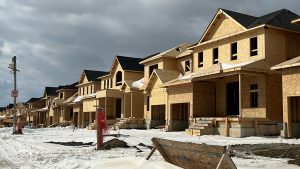As summer ends and fall approaches, when it comes to the economy, there’s not only an elephant in the room but also a donkey. I’m speaking of the GOP and the Democrats, of course, as the November 5 Presidential election looms.
It’s not so much the case that no one is talking about the election. Quite the opposite. With the entry of Kamala Harris into the race, the excitement factor has shifted from near a zero out of ten to a full-on ten, with the debate drawing a huge domestic and international audience.
Rather, it will be hard to draw too many conclusions about where the economy is headed until the votes are counted and then most likely further adjudicated beyond that.
As matters stand, there is much to like about some of the latest data points, although there are also some pockets of business activity that remain in a holding pattern.
To begin with, Gross Domestic Product (GDP) growth has continued to be strong despite projections by many analysts that 2024 would be characterized by softening, on the verge of a mild downturn.
This year’s second quarter real (i.e., inflation-adjusted) GDP change annualized was a hearty +3.0%, zipping ahead faster than the first quarter’s +1.4%. 2024’s Q2 also beat the annual figures for both 2023 (+2.5%) and 2022 (+1.9%).
The latest quarter’s good result came despite moderation beginning to appear in labor market statistics and with interest rates at their cyclical peak. The monthly unemployment rate has lifted to 4.3% and the weekly initial jobless claims number has been running closer to 250,000 than in a long time.
While we used to see the U rate somewhere in the three percents and initial jobless claims below 200,000, their current positions are still notably healthy.
Stock market investors are largely feeling optimistic. As of August’s month-end closing, the three major big-cap stock market indices were up between a fifth and a quarter year over year: the DJI, +19.7%; the S&P 500, +25.3%; and NASDAQ, +26.2%. The Russell small-cap index was +16.7% y/y.
The equities enthusiasm is based on Federal Reserve statements acknowledging that it’s now time to make a start on easing interest rates. In July, a U.S. inflation rate that reached as high as +9.1% in June 2022, hit a crucially encouraging milestone. The CPI All-items index fell to just +2.9%, dropping below +3.0% for the first time in more than three years.
Some of August’s CPI line items offering the best news to consumers dealing with the financial problems of everyday living included: food at home, +1.1% y/y; the purchase of new vehicles, -1.0% y/y; the purchase of used vehicles, -10.9%; and gasoline, -2.2%.
There are still several key items showing outsized price gains: motor vehicle maintenance and repair, +4.6% y/y; motor vehicle insurance, +18.6%; and rent of a primary residence, +5.1% y/y.
Homebuilding, among all sectors in the economy, is perhaps foremost in waiting for a break on interest rates. In July, U.S. national housing starts at 1.238 million annualized fell to their lowest level in the entire elevated interest rate cycle. Nor were residential building permits, a leading indicator for ‘starts’, in any way a cheerier prospect, also touching a new bottom since before the onset of the pandemic in early 2020.
There’s been a one-third bite (-34.3%) taken out of monthly-average multiple-unit starts year to date compared with January-to-July of last year. Groundbreakings on single-family properties, probably to the surprise of many readers, are ahead by a dozen points (+11.9%) in 2024 so far.
Anecdotally, and based on the latest increases in family formations, plus population shifts within the country to the South and other sunbelt areas, there’s plenty of demand for new housing if it can just be made more affordable. On that score, think lower interest rates.
Concerning nonresidential construction, the put-in-place investment results from the Census Bureau show wonderful half-year results, with many sub-categories making double-digit percentage gains: educational, +10.3%; public safety, +38.4%; power, +12.9%; highways and streets, +10.0%; effluent removal and water supply, +12.6%; and manufacturing, +25.5%.
Here’s where the policy differences of the two parties vying for top spot will have some of their greatest impacts. After November 5, will there continue to be the big push on energy transition away from fossil fuels to renewables? Will infrastructure works continue to receive priority spending? Where will the focus of capital spending on manufacturing pivot if a number of the proposed more restrictive foreign trade measures (i.e., heightened tariffs on imports) are implemented?
To finish with consumer confidence in the U.S. overall, it’s probably about right where it should be, given the uncertainty over who will be running the nation’s economic affairs as 2024 soon leads into 2025. The Conference Board has calculated a confidence index reading for August that was only a smidge above its base metric of 1985, equal to 100.0. Such a level is on the fence versus intermittent periods of much loftier or much-reduced findings.






Recent Comments
comments for this post are closed